
‘The top of Michael Snow’s curriculum vitae reads, born: Toronto, Ontario, 10 December, 1929. Occupation: filmmaker, musician, visual artist, composer, writer, sculptor. As Canada’s best-known living artist, Snow is also one of the world’s two most highly acclaimed experimental filmmakers (the other being Stan Brakhage, US). Although Michael Snow practiced as a visual artist in Toronto in the 1950s, Canadian art critics as a whole only began to champion his work after he moved to New York City with his wife, Joyce Wieland, in 1962. In the 1960s, he developed a reputation for being an important innovator in the fields of Pop and Minimalist art, with his “Walking Women” series, and with his film work. Retrospectively, his second film, New York Eye and Ear Control (1964), is now viewed as being a key to the important contrapuntal complexities of Snow’s oeuvre. In it, the improvised, spontaneous, “expressionist” and “emotional” music of avant-garde jazz musicians Albert Ayler, Don Cherry, John Tchicai, Roswell Rudd, Gary Peacock and Sonny Murray “coexists” with the “classical,” measured, “composed,” and “intellectual” filmed images (in Snow’s own words).
‘Nineteen sixty-seven saw the appearance of Snow’s first real “structural” film, Standard Time, in which the main subject appears to be the camera’s “panning” movements, and, perhaps the most discussed and admired experimental film ever made, the “45 minute zoom,” Wavelength. Prominent art and film historians/scholars P. Adams Sitney and Annette Michelson make claims for its cinematic processes being analogous to “philosophical thought” and “consciousness” itself, respectively. At the very least, Wavelength extends the artist’s exploration of temporality linked inexorably with space. He continued in this “movement” mode with (Back and Forth) and his epic “metaphor on vision,” La Région Centrale, but earlier, in 1969’s One Second in Montreal, he combined a concern for duration with a cross-media exploration of the boundary conditions of film and photography. Snow made a comic parody of Wavelength in the early 1970s with the Dada-esque Breakfast (Table Top Dolly), where the camera itself, tracking forward, destroys the contents of an overstuffed breakfast table. He continued in the comic vein with So Is This, a semiological deconstruction of the English language, which amazingly manages to entertain its audiences with no sound, and only words on the screen.
‘The term “Renaissance man” is greatly overused, but is an apt moniker for Michael Snow who is an accomplished writer, with significant things to say about visual art and film, and an important figure on the avant-garde, improvisational music scene. He also has a great sense of community, being a principal supporter over the years of Toronto’s non-profit cultural institutions including the Music Gallery and the Funnel Film Cooperative, and especially the Canadian Filmmakers Distribution Centre, which he has kept operational almost single handedly by depositing all his films in their care. In 1994 the Power Plant and the Art Gallery of Ontario collaborated on “The Michael Snow Project,” an extensive retrospective of the artist’s work from 1951–1993, through four separate exhibitions, and which also included the publication of four books. The recent retrospective of Snow’s multifaceted work in Montreal at the 2002 Festival International Nouveau Cinéma Nouveau Médias (October 10-20) is evidence of his continued creativity (with a new feature length film, Corpus Callosum, a live concert, the launch of his DVD-Rom, Digital Snow) and importance in the field(s) of avant-garde art.’ — Peter Rist
___
Stills
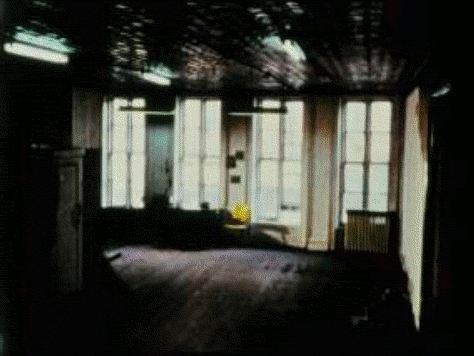


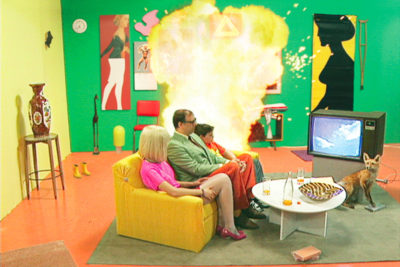
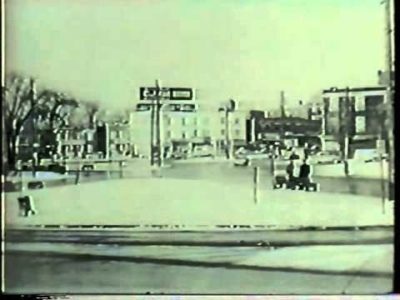
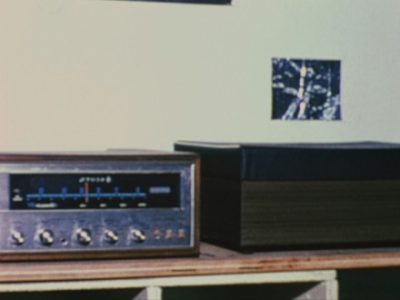
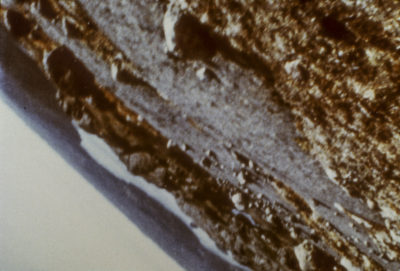
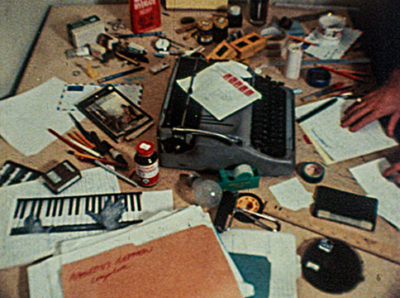

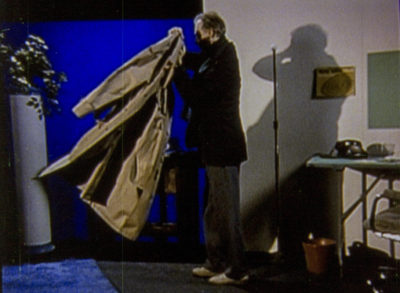
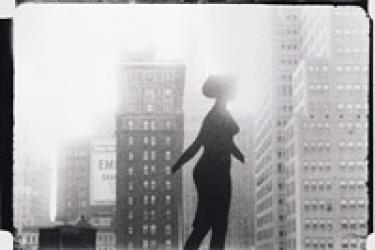
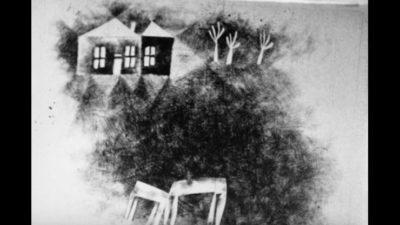
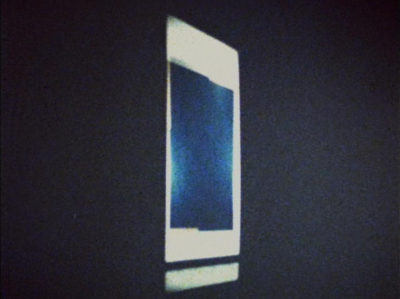

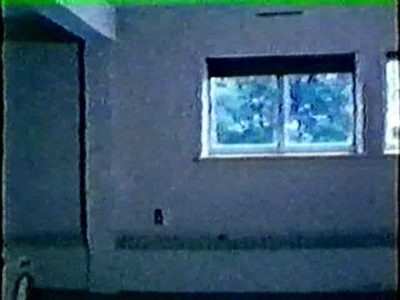




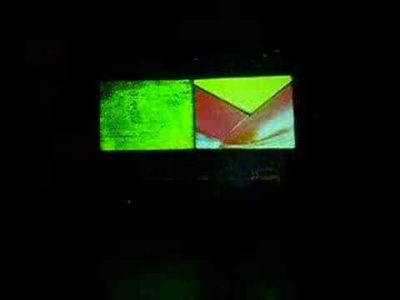

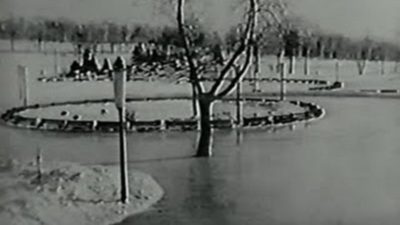

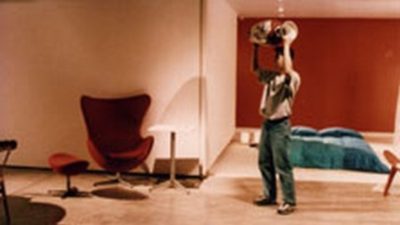
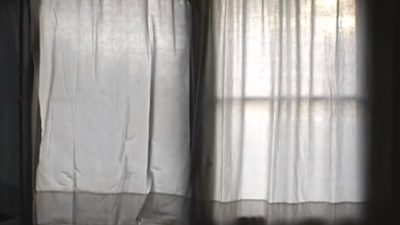
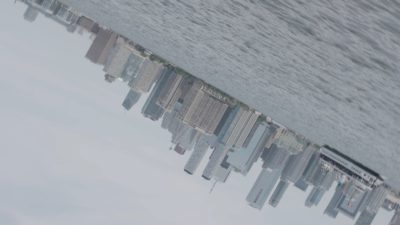
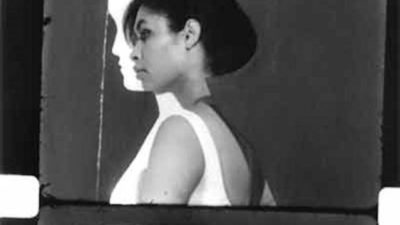

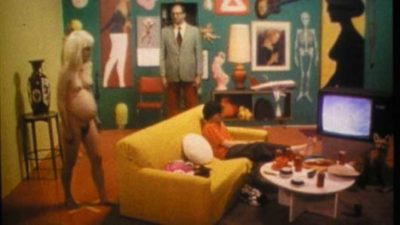
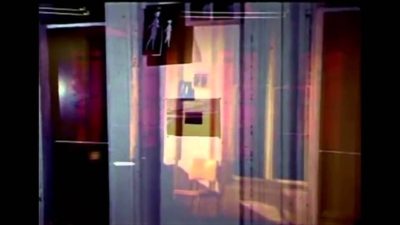
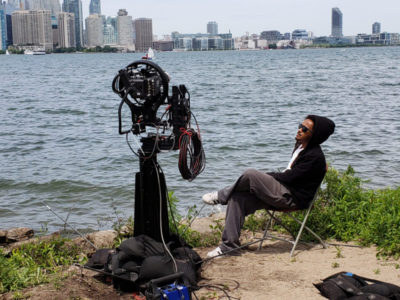

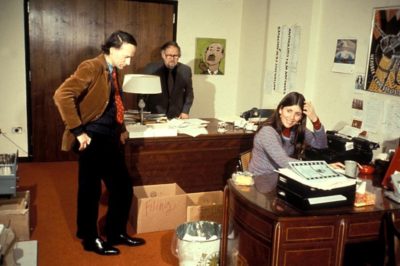



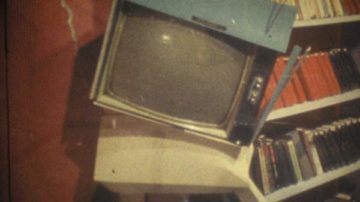


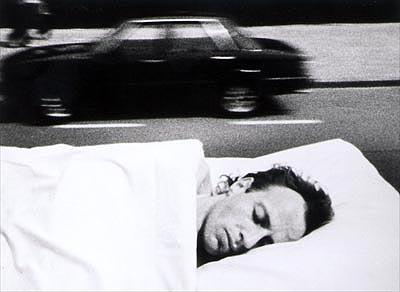










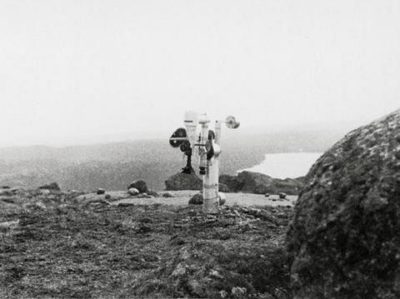

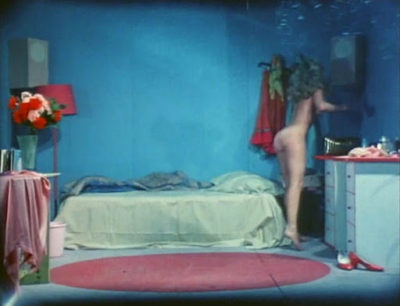

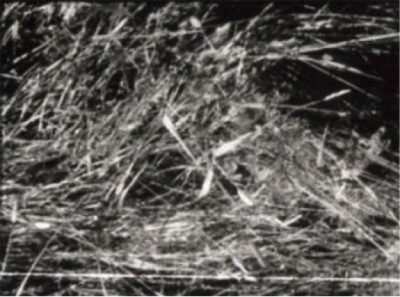


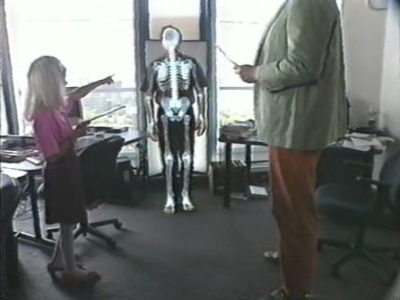




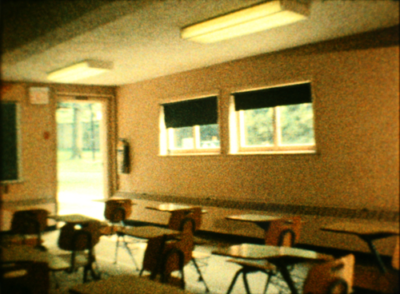
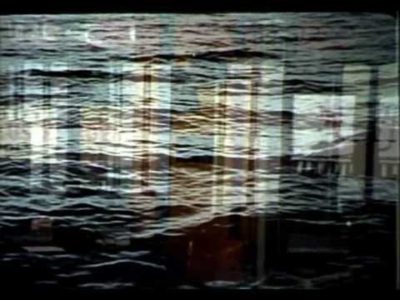
____
Further
Michael Snow @ IMBb
Michael Show @ Jack Shainman Gallery
SONORE VISUEL: MICHAEL SNOW
Michael Snow @ Re:Voir
Michael Snow @ Light Cone
Book: Michael Snow
Michael Snow @ The Film-Makers’ Cooperative
The Lord of Missed Rules: An Interview with Michael Snow
The Radical, Playful, and Primal Perspectives of Michael Snow
Annette Michelson on Michael Snow
Book: The Collected Writings of Michael Snow
Michael Snow is Still Going Strong
Michael Snow @ MUBI
Around Wavelength
Canada’s Multimedia Master: An E-Mail Interview with Michael Snow
Book: Sequences
Artist of the week: Michael Snow
The Michael Snow Dossier
Michael Snow’s “Closed Circuit”
Michael Snow by Alan Licht
The Amazing Adventures of Michael Snow: an uncensored history of Toronto’s most notorious art star
The “Presents” of Michael Snow
____
Extras
Michael Snow 1983
Steve Reich in conversation with Canadian artist Michael Snow
Michael Snow: Video Fields
Aki Onda / Alan Licht / Michael Snow live @ Cafe Oto (2011)
_____
Interview

Leah Sandals: So what would you have done, do you think, if you hadn’t gone into art?
Michael Snow: Well, I started to play music in high school, and I continued to play professionally. So that was, right from the beginning, also another career.
At times, I thought I should stop and concentrate on being a visual artist, but I didn’t.
For a while, I was playing with a band, and we were quite busy. We worked pretty much all one year at the Westover Hotel [now Filmores in downtown Toronto]. Around ’59, ’60, something like that. And I had a studio and I made some art that turned out to be interesting at the same time.
LS: And that music practice has continued up to the present day—just a few weeks ago, you played a show at Yonge-Dundas Square. And earlier, you mentioned that the piano in your living room belonged to your mother. Can you tell me a bit more about your first experiences of music?
MS: My mother was a very good pianist. She wasn’t professional, she never played in public, but she could read anything.
Sometimes, when I was in public school, she wanted me to study piano, but I wouldn’t do it. I wouldn’t do anything, actually; I was very obstinate, ridiculous, a serial rebel.
On one occasion, she thought she would go so far as to arrange a meeting with a piano teacher for me, and said she would pick me up at school and take me there. So I told my friends to tell her that they didn’t know where I was.
Then, I discovered jazz on the radio, and I was interested in the piano parts of it—Jelly Roll Morton and Duke Ellington. So I started to teach myself how to play piano, and in a few months I was playing in bands. I met other people who were interested in the same kind of music, and we started to play.
When Joyce and I decided to go to New York, I thought that was a good occasion to stop playing. And I did stop playing at that time, for a while. But during that time, I became more involved in sound in every way.
LS: So when you did give up music for a bit, you focused more on sound in your installations and films.
MS: Yes, sound in the films became a very important thing.
LS: I’m guessing that there is something you get from making music that you don’t get from making art. What is that?
MS: Right from the beginning [in music] it was the improvisation that interested me. Improvisation in jazz is often thematic—there are styles. And I started with that. But eventually it became totally free improvisation.
And I don’t free improvise with any other medium—except, maybe, well I did a lot of drawing starting when I was at OCA and in the next couple of years. They might be improvised.
But basically, with the artworks—sculpture or photographic work—there’s not that much of an improvisation. They are planned. And the same with the films.
So music is, in that sense, a completely different activity and has its particular excitement in that it has never been never played before.
LS: Now, I’m curious about what your favourite albums are—your desert-island discs. What do you think?
MS: One of Glenn Gould’s Goldberg Variations, which covers so much terrain. There isn’t anything better.
But after that would be some of the Jelly Roll Morton recordings, and his band the Red Hot Peppers, and then more modern jazz—Miles Davis, John Coltrane, Thelonious Monk.
LS: You have had such a multifaceted practice, which wasn’t common when you were starting out, but is much more prevalent now. What are the biggest lessons you have learned through all these practices?
MS: Even if you don’t know where you are going, you should go in the direction that is somehow indicated.
You can’t really predict the effect of something, or details of a bigger kind of gesture, and sometimes it takes a little while to learn what you have done.
Watching [a work] and hearing it again, and considering what it is that you did, will sometimes imply what the next thing should be.
LS: Interesting. What examples come to mind?
MS: Well, to make the film La Région Centrale, I conceived of a machine that moved the camera under orders, so to speak. And then I did an installation with that machine. I was surprised to find myself thinking, “this can also do that.”
You know, about two years ago, there was a conference at the Louvre on La Région Centrale—three days of papers by people from all over Europe, and a showing of the film, which is a three-hour film. This was a film that was made in ’69 or ’70, and it’s very much still around.
LS: So what did you learn about La Région Centrale from being at that conference? What did you learn about it anew?
MS: There were very interesting readings of the sound in La Région Centrale, different interpretations of the sound-image relationship.
LS: And while I’m curious about the origin of many of your works, this seems like a good time to ask, where did La Région Centrale develop for you, initially?
MS: What led me to it was the [previous] film called Back and Forth, which is built completely on back-and-forth panning.
The idea for La Région Centrale was that it should be a landscape, and should be completely spherical movements.
La Région Centrale was totally experimental, in the sense that I conceived of the movements, but I’d never ever seen anything like it. When I was shooting, I had a kind of score, but I also improvised.
In one week, it was shot, and we got the film to the lab in Montreal, and next day or so, we went to have a look at it. It was completely new to me. I had never seen anything like it.
It could have been [different]. There was a lot involved, with the helicopter.
LS: You rented a helicopter?
MS: To get there. That was one of the most extreme risks that I’ve taken. Because there could have been something wrong with it—something wrong with the camera, with the helicopter.
Some parts [of the film] were better than others. Mostly, it’s pretty good.
LS: Interesting that you had no clue how it would turn out, initially. What are your favourite films?
MS: It’s hard to say. There are a couple of films by Paul Sharits that I like. And also by Ernie Gehr. And Ken Jacobs, Ron Rice. Stan Brakhage’s The Art of Vision.
Brakhage was very influential in a kind of clarifying way, because I wanted to not do what he was doing.
LS: Why did you not want to do what Stan Brakhage did? Was it your “serial rebel” thing?
MS: Of his work, I thought, he’s a great filmmaker, and, in some ways, too personal and expressionist. I thought that the machine-ness of the camera ought to be stressed, not negated.
What he did was very diaristic, personal—and I think it’s great, what he did, and that was a very avant-garde thing to realize that films don’t have to be made by a crew with a 35mm camera. Stan wasn’t the only person who did that, but that’s what experimental film was founded on—that one person could do it. And Stan was definitely the leader.
Now, Stan hated La Région Centrale. And he didn’t like Wavelength, either. So, in the community of experimental filmmakers, which was small, in New York and San Francisco, [that] was known. He was a great lecturer, and in his lectures he would describe why he thought La Région Centrale was wrong.
LS: What was your reaction to his critique?
MS: I thought it was somewhat understandable considering what he did. What I did wasn’t an attack on him, but it was something that was somewhat opposed, in a sense.
But the wonderful thing about that one day I got a letter, a 20-page handwritten letter from him. He had just seen La Région Centrale and totally changed his mind. “It’s not this, it’s this, it’s this, I see what you meant by this.” And that letter was followed by another letter.
His wife was a Torontonian, and he mentioned that she had persuaded him to give it another chance. And then he changed his mind. Not only did he change his mind, but he really shared what he thought in great depth with me. Wonderful thing to do.
LS: It’s a very generous response. Related to this story: Why has the personal not been of interest to you? Or why do you think you have held off on dealing with the personal in your art?
MS: Well, it might be that the personal style is an aspect of instrumental playing in jazz. Playing jazz is much more personal and stylistic than playing classical music in general.
So it might be that, for me, that kind of personal thing was being taken care of by music. And film as something machine-made started to take on an importance in my thinking.
______________
15 of Michael Snow’s 28 films
______________
Short Shave (1965)
‘Vanity. Had a beard. Appearance (looks). Looking. Disappearance act. Hand-made fades and zooms but camera made shave. Camerazor. Handsome. Tired. Walking Woman. My worst film.’ — MS
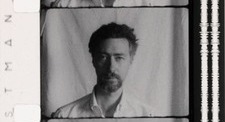
______________
Wavelength (1967)
‘I wanted to make a summation of my nervous system, religious inklings, and aesthetic ideas. I was thinking of, planning for a time monument in which the beauty and sadness of equivalence would be celebrated, thinking of trying to make a definitive statement of pure Film space and time, a balancing of “illusion” and “fact,” all about seeing. The space starts at the camera’s (spectator’s) eye, is in the air, then is on the screen, then is within the screen (the mind). The film is a continuous zoom which takes 45 minutes to go from its widest field to its smallest and final field. It was shot with a fixed camera from one end of an 80 foot loft, shooting the other end, a row of windows and the street …. The room (and the zoom) are interrupted by four human events including a death. The sound on these occasions is sync sound, music and speech, occurring simultaneously with an electronic sound, a sine-wave …. It is a total glissando while the film is a crescendo and a dispersed spectrum which attempts to utilize the gifts of both prophecy and memory which only film and music have to offer.’ — MS
Excerpt
Wavelength For Those Who Don’t Have the Time
_____________
Back and Forth (1969)
‘This neat, finely tuned, hypersensitive film examines the outside and inside of a banal prefab classroom, stares at an asymmetrical space so undistinguished that it’s hard to believe the whole movie is confined to it, and has this neck-jerking camera gimmick that hits a wooden stop arm at each end of its swing. Basically it’s a perpetual motion film that ingeniously builds a sculptural effect by insisting on time-motion to the point where the camera’s swinging arcs and white wall field assume the hardness, the dimensions of a concrete beam. “In such a hard, drilling work, the wooden clap sounds are a terrific invention, and, as much as any single element, create the sculpture. Seeming to thrust the image outward off the screen, these clap effects are timed like a metronome, sometimes occurring with torrential frequency.’ — Manny Farber
the entirety
_____________
One Second in Montreal (1969)
‘This serial procession of pictures is utterly fascinating and hypnotic in spite of the fact that the images themselves are quite ordinary. An overwhelming sense of mystery and deja vu is generated as the parade of odd bleak photographs moves by. One attempts to figure Snows logic in selecting which pictures would be held longest, which the briefest and thus one is made to analyse and concentrate on the images far more attentively than one normally would. It becomes clear that Snow has forced an extremely intense subject-object relationship, not simply by the fact that he has held certain pictures longer than others, but because these durations are structures mathematically, are given a pattern and logic which seems purposive, that is, it seems to move teleologically toward some meaning. The only meaning, however, is ones relation to the temporal structure. Thus One Second In Montreal becomes a sculpture which exists in time without motion. It is typical of Snows genius, a gift best described by John Cage when he said: Where beauty ends is where the artist begins.’ — Gene Youngblood.
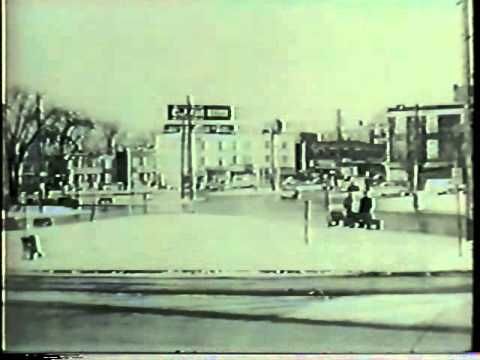
______________
w/ Joyce Wieland Dripping Water (1969)
‘You see nothing but a white, crystal white plate, and water dripping into the plate, from the ceiling, from high, and you hear the sound of the water dripping. The film is ten minutes long. I can imagine only St. Francis looking at a water plate and water dripping so lovingly, so respectfully, so serenely. The usual reaction is: ‘Oh, what is it anyhow? Just a plate of water dripping.’ But that is a snob remark. That remark has no love for the world, for anything. Snow and Wieland’s film uplifts the object, and leaves the viewer with a finer attitude toward the world around him; it can open his eyes to the phenomenal world. And how can you love people if you don’t love water, stone , glass?’ — Jonas Mekas
the entirety
______________
La Région Centrale (1971)
‘”La Région Centrale” was made during five days of shooting on a deserted mountain top in North Quebec. During the shooting, the vertical and horizontal alignment as well as the tracking speed were all determined by the camera’s settings. Anchored to a tripod, the camera turned a complete 360 degrees, craned itself skyward, and circled in all directions. Because of the unconventional camera movement, the result was more than merely a film that documented the film location’s landscape. Surpassing that, this became a film expressing as its themes the cosmic relationships of space and time. Cataloged here were the raw images of a mountain existence, plunged (at that time) in its distance from civilization, embedded in cosmic cycles of light and darkness, warmth and cold.’ — StrokeHole
the entirety
Michael Snow discusses La Région Centrale
______________
Rameau’s Nephew by Diderot (Thanx to Dennis Young) by Wilma Schoen (1974)
‘Snow’s first “talking picture,” the film is divided into approximately twenty sections tied together by thematic rather than narrative concerns. Aside from its most prominent theme — the relationship of the film’s sounds to its images — its concern with memory and the different uses of the word/sound “for/four/fore” is explored. Indeed, the meanings of words and their sounds are played with at length; the film is awash with various puns, quotes and wordplay, which is hinted at in the title (Wilma Schoen is an anagram of Michael Snow) as well as in the cast credits (many of the several dozen names listed — such as Nice Slow Ham, Seminal Chow, Show Me A Ling and Lemon Coca Wish — are anagrams for Michael Snow).’ — Endimione17
Excerpts
_______________
Two Sides to Every Story (1974)
’16 mm colour film loop, 11:00 minutes, two projectors, switching device, and aluminum screen.’
Excerpt
________________
Michael Snow Presents (1980)
‘The apparent vertical scratch in celluloid that opens Presents literally opens into a film within the film. When its figure awakens into a woman in a ‘real’ unreal set, the slapstick satire of structural film begins. It is not the camera that moves, but the whole set, in this first of three material ‘investigations’ of camera movement. In the second, the camera literally invades the set; a plexiglass sheet in front of the dolly crushes everything in its sight as it zooms through space. Finally, this monster of formalism pushes through the wall of the set and the film cuts to a series of rapidly edited shots as the camera zigzags over lines of force and moving fields of vision in an approximation of the eye in nature. Snow pushes us into acceptance of present moments of vision, but the single drum beat that coincides with each edit in this elegiac section announces each moment of life’s irreversible disappearance.’ — Philip Monk
Trailer
Excerpt
_______________
So Is This (1982)
‘SO IS THIS parlays an elegantly simple concept into an unpredictable, cumulatively rich experience. “The film is a text in which each shot is a single word, tightly-framed white letters against a black background. Compared to Snow’s recent epics … it seems almost a throwaway but it’s also the most satisfying film he’s made in a decade …. “With formalist belligerence, SO IS THIS threatens to make its viewers ‘laugh cry and change society,’ even promising to get ‘confessional.’ Although the film does reflect Snow’s personality – his Canadian-ness, preference for humor over irony, obsession with art world chronology (who did what first) – its only confession is the tacit acknowledgement that he’s sensitive to criticism. Snow takes full advantage of his film’s system of discourse to twit restless audiences . A lot of this is pretty funny but SO IS THIS is more than a series of gags. Snow manages to defamiliarize both film and language, creating a kind of moving concrete poetry while throwing a monkey wrench into a theoretical debate (is film a language?) that has been going on sporadically for 60 years. “If you let it, Snow’s film stretches your definition of what film is – that’s cinema and SO IS THIS.’ — J. Hoberman
the entirety
______________
Seated Figures (1988)
‘Seated Figures explores the ground zero of motion pictures. A landscape from the perspective of an exhaust pipe! … Although hypnotic, the movement is not continuous, the vehicle used stops, reverses directions, then accelerates, often producing a diagonally striated forcefield . Snow is deceptively artless, a master of the visual deadpan. While trafficking in geological abstraction, he arrests the films frantic motion, freezing some blurry onrush or a frame of flowing water. A soundtrack of coughs, yawns and a humming projector creates a further displacement. The images are distanced accompanied by the muffled noises of an audience watching a movie. Hence the mysteriously inert title Seated Figures is about its audience. Not only are we sent flying face down over the earth, but Snow reverses the oldest concept in image making — he juxtaposes our seated static figures against a constantly moving ground.’ — J.Hoberman
Excerpt
_______________
*Corpus Callosum (2002)
‘Citing *Corpus Callosum as one of the best movies of the 21st century, Jim Hoberman writes, “Part old-fashioned Renaissance man, part hardcore avant-gardist, the Canadian painter-photographer-filmmaker-musician Michael Snow gives full vent to his genius in this exhilarating perceptual vaudeville, titled for the ‘central region’ of tissue that acts as a conduit between the brain’s two hemispheres…. *Corpus Callosum is a bonanza of wacky sight gags, outlandish color schemes, and corny visual puns that can be appreciated equally as an abstract Frank Tashlin comedy and as a playful recapitulation of the artist’s career. From the opening reverse zoom through the series of 360-degree pans to the final line animation created by Snow in 1956, this 92-minute feature is a self-curated retrospective, but with a twist.”’ — MoMA
the entirety
______________
Solar Breath (2002)
‘Filmed using a digital camera, ‘Solar Breath (Northern Caryatids)’ is a continuation of Snow’s longstanding interest in perception, optics and natural phenomena. Sucked outwards from the interior of the artist’s Northern Ontario cabin by a Solar Wind, a curtain becomes violently flattened against a fly-screen in a naturally looping action as though the house is breathing. Projected directly onto the gallery wall, the image is the actual scale of the window. ‘Caryatids’ refers to an architectural support, traditionally sculpted in the form of a draped female figure.’ — IMMA
the entirety
______________
Sshtoorrty (2005)
‘Playing painterly form with and against story-telling form, this Short Story is a loop that depicts a loop and is itself looped.’ — IFFR
the entirety
_____________
w/ Carl Brown Triage (2006)
‘A dual-projection film where each director made 30 minutes of film without knowledge of what the other was making. Snow’s side is a visual encyclopedia of natural and man-made objects. Brown’s side transforms footage of a San Francisco cable car.’ — letterboxd
Excerpt
*
p.s. Hey. ** wolf, wolp! Yeah, wtf on the blog’s insane visibility issues. I’m massively sick of it and trying to stay massively resigned. I do often wish I had a clever pseudonym, and I will try that one. Not knowing off the top of my head what Bombay Potatoes are meant to taste like, I’m sure I would have been raving about yours, but remember that most of what I eat every day tastes like high quality cardboard, so … I’ve never tasted Paul Newman’s edible stuff, as I think I said, but I’ve always thought, you know, he was cool enough guy that I’ll give him advance credit that he wouldn’t put his name on shit. I’ve been vaguely wanting to trek over to the American Store by the Eiffel Tower and get some mac&cheese, and I might just get some of the BBQ sauce if they have it, which I think they might, although the store is only about cafe toilet size. Cruz’s image and every other image in the world has been successfully off the face of my brain by the merest thought of those poppadoms. Thank you, saviour. ** Scunnard, Hi. I totally agree that these are amazing times for new lit and books! ** David Ehrenstein, Hi. Everyone, FaBlog celebrated Juneteenth thusly, and you are cordially invited. ** Bill, Hey. Ooh, ‘scrappy’ sounds good. ‘Scrappy’ sounds like what I need. ‘Scrappy’ might even be the cure to all of society’s ills. Anyway, that film sounds definitely doable and more. I’ll see what I can do. Congrats on the fragile reopening, and, yeah, I think you’re right to worry from my far away perspective. So, gorge. ** _Black_Acrylic, Hi. Yeah, I’m sure it becomes second nature. It’s still odd though. Do sitcoms still used canned laughter? It’s been so long since I’ve seen one. I thought that might be a historic method, but then again having live audience watch a sitcom be filmed on a stage is even more historic seeming. Excellent about your story! I’ll hit it pronto! Everyone, The maestro Ben ‘_Black_Acrylic’ Robinson has new, wonderfully titled (“SUGAR GLIDER STARS”) short fiction piece up on the terrific Silent Auctions site. Here. Get yourselves over there post-haste surely! Awesome, sir! ** Zak Ferguson, Hi, Zak! What a great pleasure to have you here! Oh, I’m awful at being attentive to Messenger, I’m afraid. Thank you, I’m a big fan of your writing and ventures as well. I … think I don’t know Mike Corrao’s work, so I will go discover it, and thanks a lot. Aw, you’re super kind. Well, boomeranging respect to you, man, and please come hang out here any old time the mood or thought strikes, please. Have a fine weekend. ** Steve Erickson, Hi. Well, you just laid out why I completely avoid Twitter and feel so good about that decision. I’ll never understand why people get off on cluttering up their minds and verbal output with that soft fascist crap. Ah, ‘Disclosure’ sucks, eh? That’s too bad. I know people who were very excited about it in advance. Early African Head Charge is fantastic. What a good idea. Think I’ll join you. ** cal, Hi, Cal. Yep, publishing has been an assembly line of musts of late. Well, if you pick and choose, as always. Thank you about my GIF works. I’m excited about the imminent one. It’s kind of different. I grew up too fast, or, rather too tall too fast, and my back didn’t grow as fast or sturdily as the rest of me, and it has been vulnerable forever, and it just decides to stiffen up and go haywire and cause me pain for a week or two straight once or twice a year, and it sucks, but it’s par for the course or whatever. I keep meaning to watch ‘Hail Satan?’ and forgetting to. Noted. Thanks, man. Corey Heiferman, If you see this, here’s Cal Graves’ note to you: ‘I replied to Corey Heiferman’s comment but just in case they dont/didnt see it, my stuff can be found at The Uvular Trill.’ Have a spectacle of a weekend. ** h (now j), howdy, h (now j)! Oh, yeah, I’m behind on my email mostly ‘cos my back’s fucked up and my brain follows suit. I will. Very, very, very good luck with phase-2. Nerve-wracking. ** Okay. The blog gives this weekend over to the great filmmaker Michael Snow. It goes without saying that you will spend some quality time with the post and him. In whatever case, see you on Monday.




 Now available in North America
Now available in North America 
Michael Snow is an Absolute Master. Of a lot of things. “Rameau’s Nephew by Diderot (Thanx to Dennis Young) by Wilma Schoen “(1974) is his Masterpiece. IMO. While seen primarily as a “Visual” artist (“La Region Centrale” is a true “Vision”) Snow has may literary underpinning. as well as musical ones. In “Rameau’s Nephew” one finds constant variations on this great song by Billy Strayhorn with lyrics by Touche) It looks forward to Altman’s use of a single (title) song in “The Long Goodbye.” The climactic scene of that masterpiece where we see sterling Hayden drown himself in a rack-focus glass reflection is very Snow. And Altman, we should all recall was Canadian.
Here’s a really great piece on James Baldwin that’s REQUIRED READING
Hey Dennis – What a treat this post is. That GIF at the top is the perfect intro. I’ve loved the handful of Michael Snow films I’ve been able to see and glad to get snippets of more of his work. I had no idea *Corpus Callosum was available anywhere and bookmarking that to check out soon.
So great to talk with you a few days ago and catch up. Interested to hear more about the Walser project once you and Zac get to see the latest iteration.
Watched a really strong doc on Roland S. Howard, which I think I learned about via someone’s guest post here, and would recommend if you’re in the mood. Speaking of music, you mentioned that you’re a fan of The Band — what’s worth seeking out beyond their first two great albums? That’s where I stalled.
Michael Snow rules! And it’s funny that I never saw a photo of him until now on your blog. I have only seen “Wavelength” which is great, and I have an album of his piano music which is fantastic. Without a doubt, today’s blog is the most important series of moments for this weekend! I just watched the first 12-minutes of the chat between Snow and Steve Reich – fascinating. Reich sounds incredible for his age. I’m spending the weekend here. Damn my lockdown life, I’m spending it with Snow!
In “Wavelength” Hollis Frampton is the man who dies. Amy Taubin finds the body and out in a call to “Richard” — Foeman. Subtext is All.
michael snow is the fucking greatest. it might be too extreme to say that he changed my life but he certainly fucking changed my outlook on art permanently and forever and into the afterlife for sure too. this post rules. rameau’s nephew is the greatest. one of my friends in the US works in film restoration and just restored LA REGION CENTRALE digitally and it’s the most awesome looking thing i’ve seen in ages.
on my end: just got confirmation of placement in a major NZ anthology of queer literature to be published by our biggest academic press. it feels like a pretty big deal for me – you know, i love amphetamine sulphate and SCAB mag and all that, but cracking New Zealand is a whole task of its own, and this anthology is collected “great works of NZ queer literature 1985-now” which just feels… like, fuck, exciting to have that kind of recognition at home. it was some wonderful news. i also met with the parents of my abusive flatmate and it looks like they’re actually going to get him psychiatric care and move him home. which means i may be able to go back, requiring no replacements whatsoever….. things are changing fast over here, but yeah, wow. the two poems in the NZ queer lit anthology are ‘BODY.’ from inside the castle and ‘what i wanna be when i grow up’ which D. published in SCAB Magazine back in I think it was volume 3. i have a piece i’m really excited about in the next issue of SCAB too, “on GG allin,” which i wrote over the course of like six hours in a trance like state and yet is super short. wow, sorry, i usually feel really arrogant talking about my own work but i’m excited about all of these things and felt like sharing. and michael snow made me even more jazzed. and the good flat news, too. and the anthology pays me a fucking advance, like, man, just taking these simple steps into the world of ‘legitimacy’ (whatever that means) feels really nice – tho i try to avoid thinking of myself in terms of ‘somebody who is read,’ or whatever, ya know? it’s way more pleasant just to think about how and why and what i write and if people read or publish it later then that is cool. that is cool.
i’m gonna second whoever recommend Mike Corrao to you, especially ‘gut text’ from 11:11. i submitted a manuscript to 11:11 a few weeks ago that needs a lot of work but i don’t know where the work is needed – need the editorial, spectator-like help – and Andrew over there was like “hey yeah i’m just passing this MS onto mike corrao” which made me nervous as shit like i’ve admired that guy’s work for ages, he’s awesome. anyway, yeah, maierhofer’s peripatet, fucking book of its year, great to see the blog tide him in yesterday.
hope all is well with you and sorry for the narcissistic post, lots going on in my world,
love,
j
Dear Dennis: Thank you for another great day. Michael Snow is an inspiration to me, too. Did you get to see his new work Cityscape (2019) on Toronto? I think someone programmed it here in NYC before quarantine, but not sure if it took place at least online. (There’s been a variety of great online shows of avant-garde or experimental films, so I couldn’t keep up with everything. Actually, managed to see only a few.) In any case, I heard wonderful words about that work.
In case you hadn’t seen this, here’s a DVD info of Variations where various artists interpret Snow’s poem (1957): https://re-voir.com/shop/en/michael-snow/759-variations-various-artists-interpret-poem-1957-by-michael-snow.html
And artist Ben Coonley who teaches at Bard and whose work I happily wrote about made Wavelength 3D back in 2002 and shared it here: https://vimeo.com/72391732
(which, “naturally,” requires red/cyan anaglyph 3-D glasses for proper viewing…)
Also, MIT’s October Files recently published this book (collection of essays) on Michael Snow. Some of these are old and much read before, but some are relatively new, so you (and people here) might want to look into it. I brought the book to my Buffalo trip in this past January and it was an excellent read. https://mitpress.mit.edu/books/michael-snow-1
I hope you feel better soon. Please hydrate and rest well. And happy Father’s Day to you!
Poetic father to me (and surely to others, also)!
oh, I see you posted the link to October Files’ Michael Snow up there, so apologies for the redundancy!
Was new to Mr Snow until this weekend, and I’m really liking what I’ve seen.
Latest FaBlog: Lonesome Donald
I just found out that Paul Kilb, the jaw-dropingly beautiful star of Gregory Markopoulos’ “Twice a Man” (1963) expired in April from the Corona Virus He was 79
The film’s female lead (her very first film appearance) was Olympia Dukakis
Late congrats to Grant for his new work.
Dennis, Yeah, I’d advised against anything with Paul Newman’s face on it. I’ve tried the coffee and various sauces, and all were yuck to me. Of course, I’m a man of exquisite taste, but…that shit sucked rotten balls. And not in the good way.
I think, too, that I’ll try Mr. Bernardara Jr’s America and give him another go and a fairer shake.
“All your years on my blog, and you still don’t like things that are too experimental, that’s kind of sad.”
Omg, hahaha. I get ya. But no, it’s not that I don’t like things that are too experimental. It depends on the experiment. When experimental gets to the point of being just cryptic and utterly lifeless, then it goes too far for me. I am an old fuddy duddy in the sense that I do think enjoyability and entertainment (and experimentalism can be part of that entertainment) are still important parts of Art. But that’s the thing (see my parenthetical in the previous sentence), experimental, even wildly experimental, can do all that. Your work does that. Derek McCormack’s work does that. If Joyce is experimental, his work does that. Mark Doten’s does that. This particular piece I read by Bernardara just…didn’t do that.
If I’m ever able to get my long-abandoned novel finished and published, you’ll actually see that it’s quite experimental, if only in the sense that it’s quite modernist. I used such elements on my Mark Dennison blog serial. Even this mainstream novel of mine is a bit experimental. I’m sure it’s been done before, but it’s a story told two different ways: the first half with a third person omniscient narrator in a quite clinical way, and the second half with a first-person, conversational narrative from the POV of the second main character. I can already see agents or editors being like, okay, one or the other, or mix them together. Nope, it’s the way it is for a reason.
All to say, of course nothing’s too experimental for me. Whether I like it or not is on a case-by-case basis.
I think I first came across Michael Snow when I picked up one of his records, and saw a short or two after. Will definitely spend some time digging in here.
We are so easily excited these days! I walked into a comic shop and browsed! Bought a couple graphic novels! Whoa. Hope I can still do that in a week.
Started Fernanda Melchor’s Hurricane Season. Very harsh. With multi-page paragraphs, in case you’re in that mood.
Bill
As h (now j) said on Friday, New York starts its second phase of reopening tomorrow. Several friends of mine return to part-time office and retail jobs, which may become full-time very quickly. The summer is also kicking in, as it’s starting to become regular air conditioner weather. I’m glad that this will allow my surgery and doctor’s visits. Now that I’m only 2 days from seeing my eye doctor, I’m getting very antsy about it. Waiting in his office was always a horrible experience, and I want to present myself in a way that makes it clear that I need surgery ASAP.
HAIL SATAN? has a rather promotional attitude towards the Satanic Temple, but it’s worth a look. It’s funnier than many comedies.
This week, I will be writing a second draft of my essay on DRESSED TO KILL for the Quietus. I feel somewhat brain-dead right now, and trying to approach the film again and explain why I think it feels dated and relevant at the same time is very hard. I will also be reviewing Ulrich Kohler’s first film, BUNGALOW, which is debuting in the US next month.